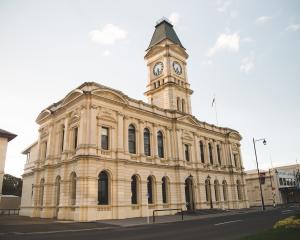
Lisa Yorke posted photographs on Facebook of the Maheno petrol station, run and operated by former Glenavy petrol station owner Garrie Ford, showing the flag displayed in a window.
Her post tells of her shock and disgust that in 2017 in New Zealand a flag that has such a mixed history would be on public display.
"This shop gets me every time I drive past. While some people don’t perceive the Confederate flag to be racist, it still doesn’t sit well with me."
Mr Ford said he was aware of the flag’s history and saw it as a symbol of rebellion.
"It’s always been used against big honchos."
He sells copies of the Confederate Battle flag to passing motorists and it is "really popular".
He believed the flag had never been racist.
"It stood for rebellion against bureaucracy."
Miss Yorke said to see a flag so closely associated with white supremacy and slavery on display in a business stirred her emotions.
"I just don’t think it’s right, here in New Zealand, especially when we’re such an inclusive society. It’s like having a Nazi flag or a picture of Hitler in the shop. It’s in a place of business. I know for myself I did not want to walk in there. I was hurt and angry and couldn’t understand why it was here in New Zealand."
She could understand a relative of a soldier who died in the Civil War having the Confederate Flag on display in their own personal space.
"I empathise with those who had relatives in the war and especially those who died in the war, but ultimately the war was about slavery.
"I would like to see the flag come down."
Victoria University of Wellington’s school of history, philosophy, political science and international relations associate professor Dolores Janiewski grew up in the American South where the Confederate Battle flag was viewed as a symbol for white supremacy, segregation, and the Ku Klux Klan.
"The reason why they wanted to break away from the union was they thought slavery might have been abolished."
She questioned Mr Ford’s need to choose the symbol if all he was doing was standing up to "bureaucracy".
"In 1860 the Federal Government was quite small — about 4000 people. It’s hard to say that’s a bureaucracy. He’s obviously interpreting that in a different way."
Prof Janiewski believed there was much misinformation on the internet about the flag and said some groups hijacked the flag’s symbolism and promoted only part of its history, distorting other parts and insisting on a single meaning. University of Otago’s senior lecturer in US history, Dr Russell Johnson, said the flag had appeal to people outside the southern states because they believed it was a symbol of rebellion.
He said for a time in the late 19th century the flag largely disappeared, but it enjoyed a resurgence in the 1950s with the opposition to the civil rights movement.
"It became a symbol of the status quo, which was a segregated white society."
The flag was picked up again by people who thought the Government of the day and people who lived out of their states were again telling them how to live, "forcing them to do things they didn’t want to do, like integrating their society," he said.











